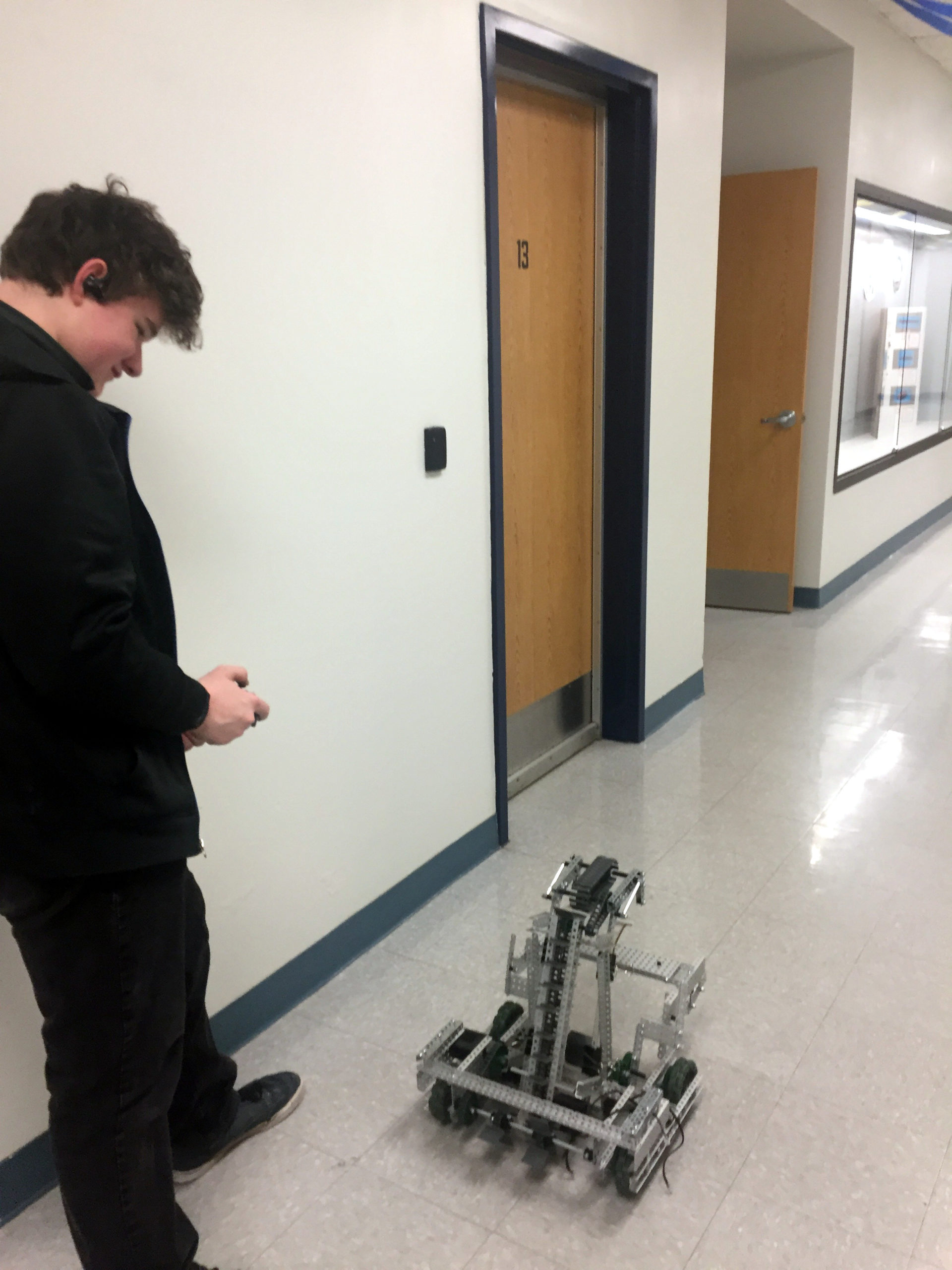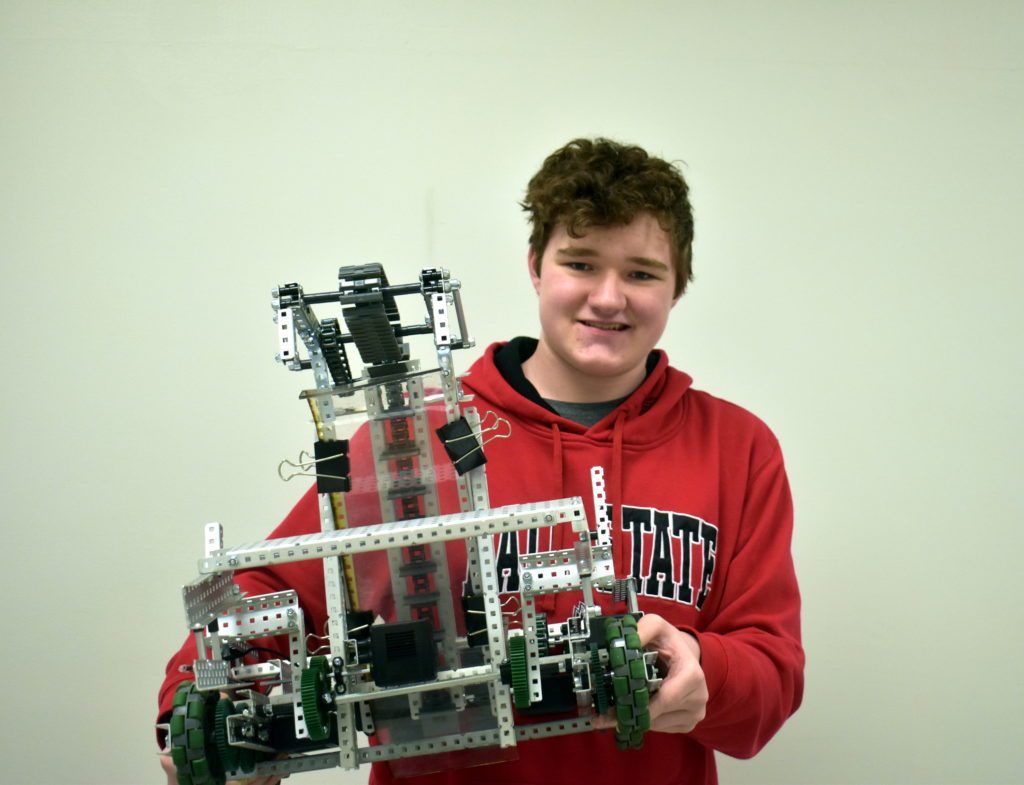By Luciano Squillante
Q/A With Mr. Grams
Q: Why did you decide to start the robotics club?
A: The Robotics club was actually started about 10 years ago by a previous teacher. I restarted the club because there were VEX clubs being started in the elementary schools and I started the middle school club so that the students can continue robotics all the way through high school.
Q: How many people are in your club?
A: We started with five and now are down three. Several students had work conflicts, sports conflicts, and other issues. Being quarantined for COVID didn’t help, either.
Q: What are you doing to get more people to join?
A: The hope was to stay in touch with the middle school program in order to keep them interested and continue in high school. With COVID, our robotics programs did not continue and it has been a challenge to regain the excitement of robotics. The VEX competitions even changed to virtual and it was a challenge to adjust, especially when our own students were being quarantined.
Q: Just to clarify what I have heard, am I correct that you and some other schools are trying to make a local robotics tournament?
A: We have been trying for the past two years to start a local league so that we do not have to travel very far for competitions. Purdue and Madjax have been working hard to support the local schools and to keep the VEX robotics programs moving forward with all of the changes happening in the schools with COVID limitations.
Q: What do you think are your chances of winning the tournament and why?
A: We are still learning about VEX competitions and how to prepare for them. Since we began rebuilding, other schools have been competing for years and have a solid system to keep kids engaged and growing. We have been trying to recruit students from our engineering classes where we teach robotics, and the hope is that they will keep the interest going, but it has been difficult with schedules and other programs students are involved in.
Q: What are the basic rules to the tournament?
A: The rules for a competition are many. There is a rulebook that is published that is upwards of 30+ pages long and includes how to play the game as well as how the robots have to be built.
Q: What are the biggest challenges of your club?
A: Mostly, student interest. Robotics requires a lot of work, design and willingness to make critical changes to a robot, especially if it is not going to work for the selected game. It can be frustrating, but it is rewarding when the robot works the way it was designed and built.
Q: What is the best thing about the robotics club?
A: The best thing about the club is that it is all about the students. The students get the design, build the robot, and compete with the robot. I merely keep students guided down their path, ask questions and help when I need to show how things can work.
Q: Why do you feel that the robotics club stimulates learning?
A: It’s all about learning. It is hands-on learning and it can be fun. There are good jobs waiting for students that get more involved into technology, especially in the design and coding of technological systems. This is a fun way to teach needed skills to get into a needed career opportunity.

Q/A With Freshman Elisha Huffman:
Q: Why did you join the robotics club?
A: Robotics has always been a keen interest of mine.
Q: What exactly do you do in the robotics club?
A: Construct robots in hopes to perform certain tasks in scrimmages.
Q: If a tournament does happen this year, what do you think your chances would be on winning?
A: I am not really sure. I think I would have to watch some real scrimmages and observe other player’s strategies to really determine a good answer for this one.
Q: What are your biggest challenges in the robotics club?
A: Building the bots and searching for a good solution to every problem that pops up.
Q: What is the best thing about the robotics club?
A: I think the best part of robotics is the cozy fellowship. Joining great minds to formulate a bridge across every gap. And having a good time with friends whilst doing that.






